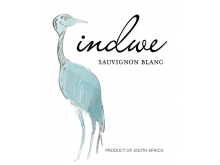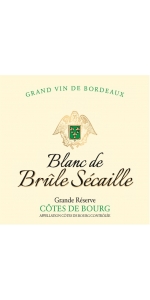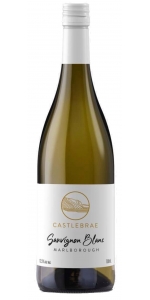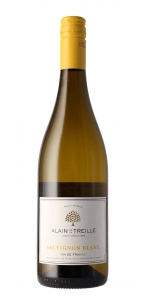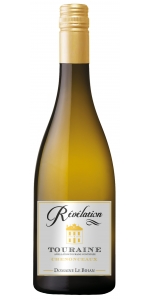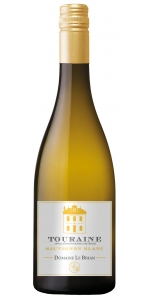Indwe Reserve Sauvignon Blanc Elim 2013
| Country: | South Africa |
| Region: | Western Cape |
| Winery: | Indwe |
| Grape Type: | Sauvignon Blanc |
| Organic: | Yes |
| Vintage: | 2013 |
| Bottle Size: | 750 ml |
Brulesecaille Blanc Grande Reserve is made from 75% Sauvignon Blanc, 25% Sauvignon Gris.
Average age of the vines is 25 years.
Manual harvest from September 19th-20th 2016.
Direct press at low pressure (whole cluster) with low amount of SO2, settling at 10°C.
Addition of yeast and alcoholic fermentation in casks 400 liters.
Raised on the lees for 6 months with regular batonnage (stirring of the lees).
Bottling in april 2017.
Fish, seafood, white meats, fine goat cheeses.
Castlebrae Sauvignon Blanc Marlborough is made from 100 percent Sauvignon Blanc.
This is a single vineyard wine made with fruit from Castlebrae vineyard, located at the mouth of the Awatere River. The vines were planted in 2007 and 2013 giving a nice mix of maturity.
The wine has vibrant notes of lychee, bell pepper and citrus characters on the nose. Fresh tropical and grassy characters fill the front palate, the mid palate is juicy and the wine finishes with a nice, sweet edge. The palate has a unique freshness that is due to the free draining soils found at the growing site.
Alain de la Treille Sauvignon Blanc is made from 100 percent Sauvignon Blanc.
This Sauvignon Blanc has a slight amber color with a fresh aromatic nose. Grassy and mineral flavored with a refreshingly crisp mouthfeel. Vines are located outside the Loire Valley AOC boundaries, hence the Vin de France classification.
Best friend as an aperitif, with all your fish meals and seafood, but as well with charcuteries, Don't hesitate to try it with goat cheese.
Our Touraine Sauvignon blanc is crisp and refreshing, with rich, ripe lime and grapefruit aromas. Great elegance with mineral style and despite everything some kind of roundness.
Average age of the vines is 20 years old.
We produce a part of this cuvee with 12 hours skin maceration and another part from directly pressed grapes
Wine was slightly filtered before bottling to ensure wine will remain stable.
Ideal for the Aperitif , any cooked fish such as smoked and grilled salmon but also obviously with a Goat Cheese.
Le Bihan Touraine Chenonceaux Sauvignon Blanc is made from 100 percent Sauvignon Blanc.
Touraine Chenonceaux "Revelation" is a limpid and brilliant colored wine with pale gold highlights. The nose is intense and expressive, full of floral aromas. It is dry and harmonious on the palate, with a tangy edge and a lively finish.
To drink as Aperitif, or with white meat, Loire asparagus and seafood.
Bihan Le Touraine Sauvignon Blanc is made from 100 percent Sauvignon Blanc.
Olfactory aspect : Limpid and brilliant with a pale gold
Nose: pronounced white floral bouquet
Palate : Dry, harmonious tangy edge with a lively finish
Indwe Reserve Sauvignon Blanc Elim 2013 is made from 95% Sauvignon Blanc, 5% Semillion
Indwe Sauvignon Blanc is full of layers, balance and persistence. The minerality is a true reflection of the Elim terroir, as is the array of flavors and tantalizing acidity. Indwe has remarkable ageing potential, or can be enjoyed now.
12 months 95% Sauvignon Blanc (Stainless Steel) + 5% Semillion (Aged in French Oak Barrels)
Manual Harvest 22 Brix at harvest Cold Temperature Fermentation at 12-14 degrees Celcius Ageing on the lees for 12 months
The Indwe Estate
At the southern-most tip of Africa, where the Atlantic and Indian Oceans meet, one finds the ‘Cape of Storms’, or more commonly, Cape Agulhas. On this peninsula lies the Elim ward and Overberg region, where we source the grapes for Indwe Sauvignon Blanc. Indwe is the Xhosa name for the Blue Crane, South Africa’s national bird. It is an endangered species and endemic to South Africa, particularly the Overberg region. The Blue Crane is very special to the amaXhosa and amaZulu, often associated with warriors and royalty.
Owner and Winemaker is Trizanne Barnard. During her productive vinous career, she has seized every possible opportunity to broaden her knowledge and experience, pressing them for every drop of goodness they offered, enriching her life, her work and her wine. With a B.Sc Agric under her belt she stepped into the real world of wine, completing harvests in Western Australia, Alsace, Bordeaux, Rhone and Douro Valley.
Back on home soil, after a year at Klein Constantia she was challenged with setting up a winery in the Helderberg. After four successful years,she decided it was time to venture on my own, creating her own project.
The Indwe Estate
At the southern-most tip of Africa, where the Atlantic and Indian Oceans meet, one finds the ‘Cape of Storms’, or more commonly, Cape Agulhas. On this peninsula lies the Elim ward and Overberg region, where we source the grapes for Indwe Sauvignon Blanc. Indwe is the Xhosa name for the Blue Crane, South Africa’s national bird. It is an endangered species and endemic to South Africa, particularly the Overberg region. The Blue Crane is very special to the amaXhosa and amaZulu, often associated with warriors and royalty.
Owner and Winemaker is Trizanne Barnard. During her productive vinous career, she has seized every possible opportunity to broaden her knowledge and experience, pressing them for every drop of goodness they offered, enriching her life, her work and her wine. With a B.Sc Agric under her belt she stepped into the real world of wine, completing harvests in Western Australia, Alsace, Bordeaux, Rhone and Douro Valley.
Back on home soil, after a year at Klein Constantia she was challenged with setting up a winery in the Helderberg. After four successful years,she decided it was time to venture on my own, creating her own project.
The Vineyards
The historic mission settlement of Elim on the Agulhas Plain comprises 6 500 hectares of land.  Half of this land is under agriculture and for the past one hundred years has been cultivated and the remaining + 3 000 hectares of Elim ferricrete fynbos is managed by the Moravian Church and the community at the Elim mission station.
Elim was established in 1824 by Moravian missionaries and sacramental wine was required for church services, and the first vineyard planting in this region subsequently occurred over 100 years ago however viticulture didn’t really establish until 1997 when it resumed again.
First Vineyard plantings: 1996 – Lands End. After Lands End, The Berrio planted the next vineyards in 1997.
Producers in Elim:
- The Berrio: 33.7 hectares (planted with 80% of white grape varietals)
- Black Oystercatcher: 18 hectares (planted with 68% of white grape varietals)
- First Sighting: 70 hectares (planted with 55% of white grape varietals)
- Zoetendal: 7.46 hectares (planted with 85% of white grape varietals)
Total hectares of vineyards 129.16 Ha = 319.161 Acres
White grape varietals found on Elim: approximately 80% Sauvignon Blanc, 15% Semillon and the rest is small parcels of Viognier, Nouvelle.
- back
Krug Grande Cuvée is born from the dream of one man, Joseph Krug, to craft the very best Champagne he could offer, every single year, regardless of annual variations in climate. Since 1843, the House of Krug has honoured this vision with each new Édition of Krug Grande Cuvée: the most generous expression of Champagne.
Review:
The NV Grande Cuvée 171ème Edition is a delightful blend of 45% Pinot Noir, 37% Chardonnay and 18% Pinot Meunier and boasts an attractive and captivating aroma of dried fruits, pastry, lemon oil, marzipan, spring flowers and ginger, with hints of almond and vanilla notes that become more pronounced over time. This medium to full-bodied wine is precise and well-structured, with a fleshy core of fruit and a sapid, incisive finish. Crafted around the 2015 vintage, the blend comprises 131 reserve wines from as far back as 2000 (42% of the total blend) and is expected to age beautifully over the next decade.
-James Suckling 99 Points
Torello Corpinnat Finca Can Marti Brut 32% Chardonnay, 32% Xarel.lo, 22% Macabeo and 14% Parellada.
The Can Martí estate soils have been formed from sediments from the Garraf Massis, deposited thousands of years ago. One of the most characteristic features of the estate’s soils is the presence of accumulations of calcium carbonate.The movement of water through the soil dissolves the carbonates present and takes them to a certain depth. The continuous repetition of this process has ended up producing the accumulation of these deposits.When these become massive, after thousands of years, they bind together and and form a hard stratum called a petrocalcic horizon. This hard stratum limits the availbility of water to the vine and the production, but is a factor that gives the grape quality.
Straw yellow color, fine and constant bubbles, clean and bright, with golden reflections. The nose reveals a subtle aromatic intensity with fresh and sweet aromas. Honey flowers, citrus notes, white fruit, and balsamic herbs such as fennel.
In the mouth the acidity is well balanced, with delicate bitter notes to the finish and a set of ripe fruits and balsamic nuances.

